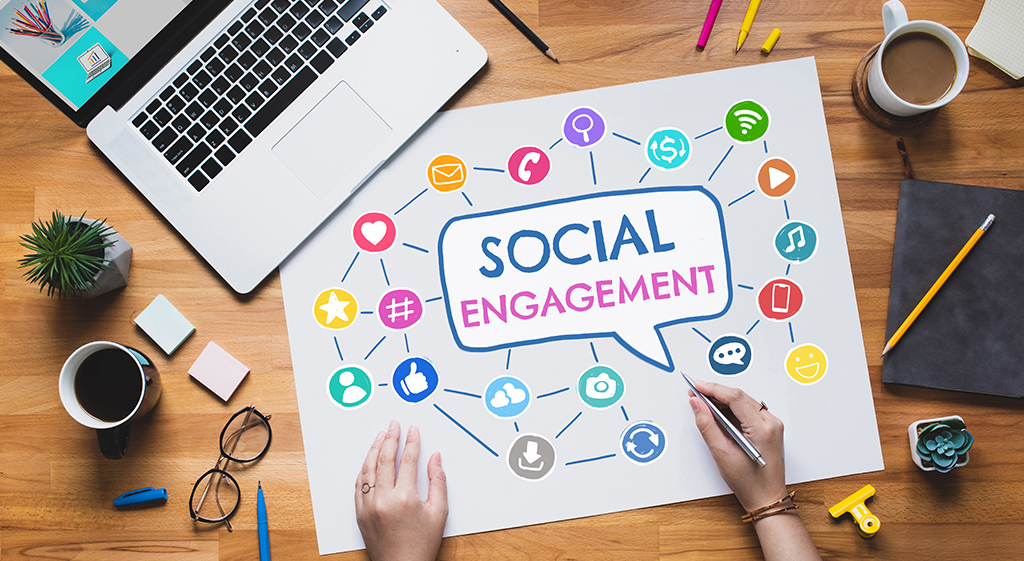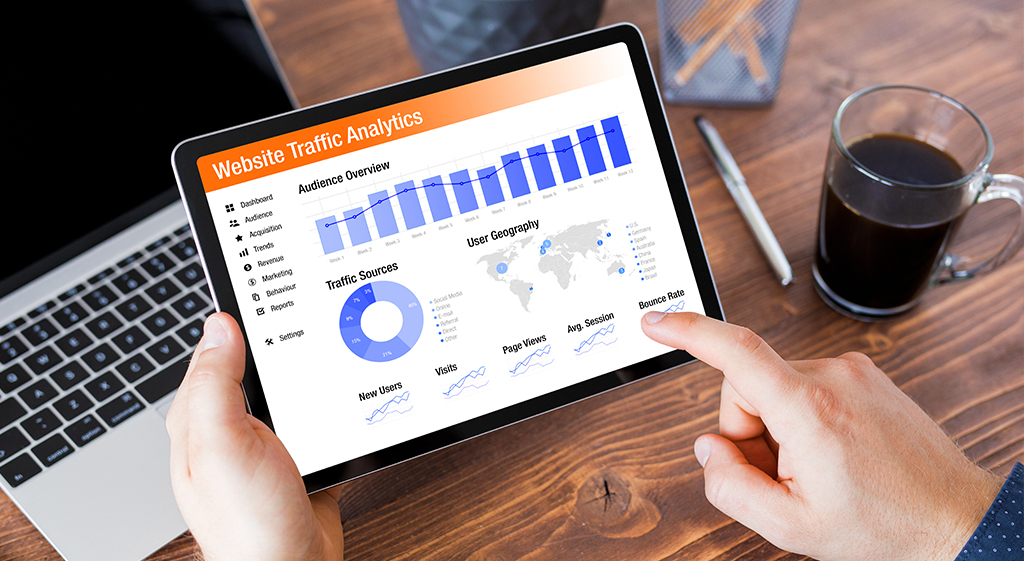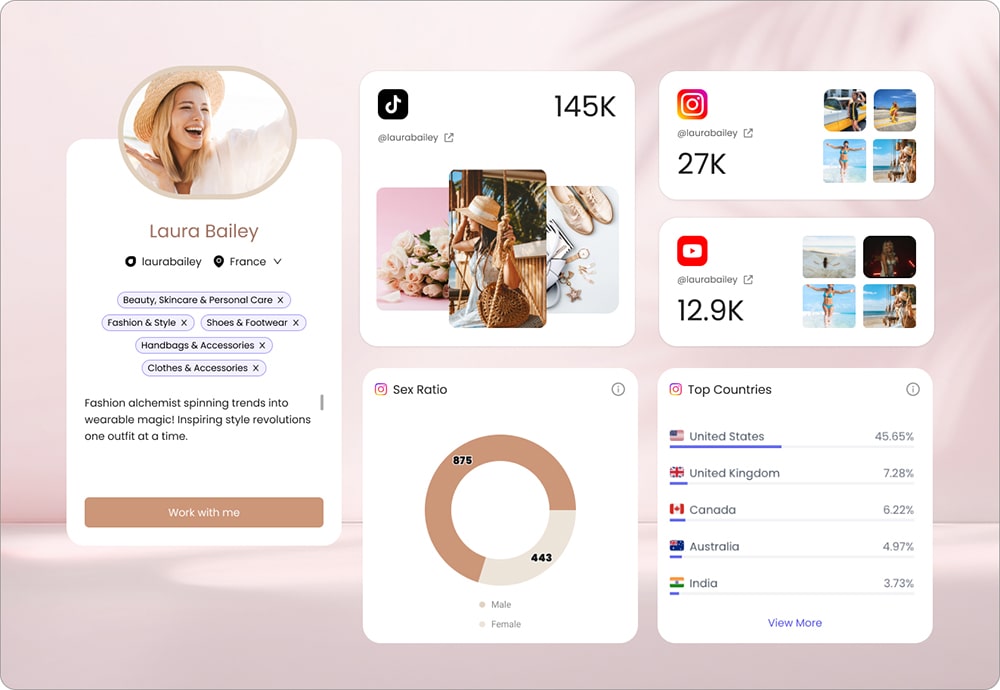“Influencer marketing is difficult to measure.” This is a common saying that we often hear from brands. However, there are specific metrics that prove this opinion to be a myth.
Nowadays, social media platforms are evolving so rapidly that it’s rather easy to see the performance insights in the platforms themselves. For example, when talking about Instagram, a social media platform that, according to Backlinko, boasts 500 million daily active users globally, the current Insights dashboard provides data for all types of content: posts, stories, reels, live, and paid content. Although, this kind of advanced data can lead to confusion. This is exactly why brands define KPIs that will highlight the performance of their campaigns and content. And furthermore, marketing specialists define the metrics that can help measure these KPIs.
Reach, impressions and engagement – these are the three metrics that define social media performance. Similarly, influencer marketing specialists also adopted these metrics for their campaigns. But what do these metrics demonstrate, and which one really matters? Let’s discuss them one by one below.
Reach Vs. Impressions
What do impressions mean on Instagram?
First things first, let’s understand what impressions are on Instagram. Impressions show the number of times your content appeared in users’ feeds, regardless of whether the user actually viewed the piece. Simply put, it does not indicate the real number of viewers, as the same piece of content can appear to a user multiple times in multiple ways. To illustrate, a reel can be shown to an account in reels feed, posts feed, and stories. This will count as 3 impressions from a single account.
What does account reach mean on Instagram?
Considering account reach, it expresses the number of unique accounts that have seen your content. As opposed to impressions, this shows the actual number of viewers. For example, if a user has seen the post in the feed and stories, it still counts as 1 account reached but 2 impressions. So, to recap, while impressions show the number of views, reach shows the number of viewers.
What does engagement mean on Instagram?

The third metric that is essential to consider is engagement. According to the Instagram Help Center, this is the unique number of accounts that have interacted with your piece of content in one way or another.
Engagement is a powerful factor that involves deliberate action on your audience’s part. This, in its turn, indicates that your content stimulates people to take action either on your post or on your profile.
Engagement also shows how interested your followers are in your content. In his video about “How the “Algorithm” Works,” Adam Mosseri, the CEO of Instagram, mentions that how your audience interacts with your content is one of the factors that can affect Instagram’s algorithm. Specifically, users’ interaction history helps the algorithm to predict how relevant and interesting each post is to them.
Which one has the most ROI Impact?
We got a closer look at different Instagram metrics. “But which one has the most Return on Investment (ROI) impact?” you may ask.
All three metrics are used in measuring influencer marketing ROI in different cases. However, it is key to consider the campaign goal before choosing the right metric. For the sake of brevity of this article, let’s consider 3 prevailing marketing goals at different stages of the marketing funnel: brand awareness, website traffic, and lead generation & sales.
Brand Awareness
Brand awareness is a goal that is difficult to measure but essential for your company’s long-term success. If you manage to reach this goal, you will have a considerable competitive advantage among similar companies: a well-known brand name.
Reach and impressions are excellent for measuring these types of campaigns. An increased number of people that saw your campaign and brand name, and a higher number of followers increase your chances of becoming a distinguishable brand. But be careful to avoid overexposing your content to the same people, as these metrics work if they are considered together. For example, if the reach growth is slow, but impressions growth is still high, there’s a chance that your content is shown repeatedly to the same people.
Website Traffic

The second goal worth mentioning here is website traffic. For this goal, we can measure it jointly with Google Analytics. First, we can check post engagement, particularly website taps from posts of that particular marketing campaign. Second, we can also compare this number by looking at website traffic amount and traffic source in Google Analytics. To be able to measure this accurately, make sure to create a tracking link for your influencer marketing campaign content. In this way, traffic from this campaign will not get mixed up with other social media traffic amount. Comparing these two numbers will also help you understand how well your campaign is performing.
Lead Generation & Sales
The third goal we are going to consider is lead generation. In its essence, it requires people to show interest in your offering and visit your website to become a lead. They either need to contact you or visit your website to get more information. This goal requires your audience to perform an action, i.e., to interact with your content piece in one way or another. We can conclude that engagement is the most reliable ROI metric in lead generation campaigns. The more people like, comment, save, and share your content, and click the link to visit your website, the higher the number of leads and the more sales you’ll be able to generate.
Summary
The efficiency of influencer marketing is not debated anymore, as marketers now know how to accurately measure and track performance results. However, like in business, it is crucial to understand the main metrics for measuring influencer marketing Return on Investment (ROI). As influencer marketers, we can consider reach, impressions, and engagement as the main indicators of how effective are different stages of a marketing funnel. Moreover, instead of defining one metric as more important than the rest, we need to understand which metric can best illustrate how effective our marketing campaign is.
Reviewed By Rem Darbinyan
Revolutionizing industries with AI, Rem Darbinyan is the CEO of ViralMango and an entrepreneur, AI expert, and influencer marketing strategist.




